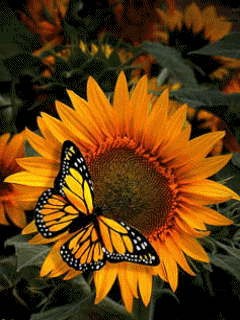Spring into Summarization
Reading to Learn

Rationale: The main purpose of reading is for a child to comprehend what they are reading. When a child is taught how to summarize, they are no longer focused on decoding words like they were in the past. In order for beginning readers to reach this goal, it is important for them to be able to learn and practice how to summarize. In this lesson, students will practice summarizing which is one of the many comprehension strategies. The students will practice summarizing by selecting and remembering important information from a passage. This will benefit children tremendously in the long run so they can be fluent readers.
Materials:
Paper, pencils, checklist for each student that includes: understanding the passage, important facts, deletion of unnecessary information, selection of the main idea; article on “Monarch Butterfly”, a chart/web to organize the facts, markers to use on chart
Procedures:
1. First, I will need to explain what summarizing is and what it’s importance is to my students. Say: "Can anyone tell me what the word summarize means?" (Wait for student response) “A summary includes the key facts in a story that are the most important. It’s important to know how to summarize so that when you are asked to explain a story, you don’t have to repeat the entire thing. Today we are going to learn more about summarizing passages and practice summarizing passages together as a class!"
2. Say: "Asking yourself questions about what you’re reading will help you remember what you were reading about, and this will help you to become better at summarizing! I am going to read a short passage and show you how I'll ask myself questions while I read this short story." After I finish modeling to the students how to ask questions and what kinds of questions to ask, I will pass out the short article on "Monarch Butterfly." Then, I will have them read the article and tell them to practice asking questions in their heads about butterflies.
Booktalk: This article talks about monarch butterflies and their transformation from a pupa to a butterfly, which is called “metamorphosis”. It also talks about the bright colors of the monarch butterfly and how they are poisonous, along with their migration patterns. For more details, read the full article!
3. Say: “Did anyone see any words they didn’t know? One of the ones I saw was “metamorphosis”, which is the transformation of an animal in its first stages of life to a mature adult. If I used it in a sentence, I would say “The metamorphosis of a butterfly starts with an egg, then goes from a caterpillar to a chrysalis, and then it becomes an adult.” You would not say: The metamorphosis was complete once the animal was a caterpillar. This is untrue because as we know, metamorphosis occurs once the transformations are complete.” Then I would ask if there were any more words that the children did not know, and we would go over those in the same way.
4. “Next, I am going to draw a web on the chart paper to help us organize our thoughts and main points from the article. Can anyone tell me where I should write the main topic in our web? Great! It does go in the middle! What should the main topic of our story be? (Monarch Butterfly). Now let's discuss the main points on the story. We will draw lines out from the middle of the web and put down facts that we found important as a whole class. For example, colors of the butterfly, the differences between male and female monarchs, migration patterns, and metamorphosis.
Assessment:
To assess the student's comprehension by using the summarizing strategy, I will ask them to write down questions that they thought of in their heads when they were silently reading. Next, I will have them create a web similar to the one that we created together in class as a team, but I will ask them to include one more key fact on their individual web. (I'll have them turn in their summary webs, question answers, and complete the following checklist for each child.)
Name:
Yes
No
Did the student clearly understand the passage?
Did the student find the topic or main idea?
Did the student recall important facts?
Did the student eliminate information that was unnecessary or repeated?
References:
https://kids.nationalgeographic.com/animals/monarch-butterfly/#monarch-butterfly-grass.jpg
http://ravenhunter8.wixsite.com/raven-hunter/reading-to-learn